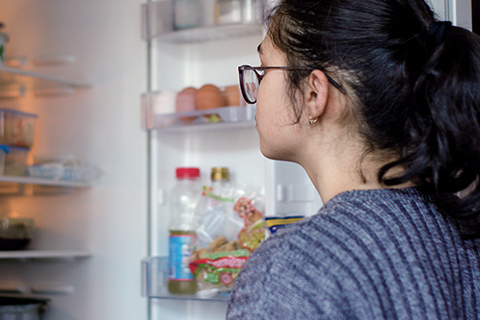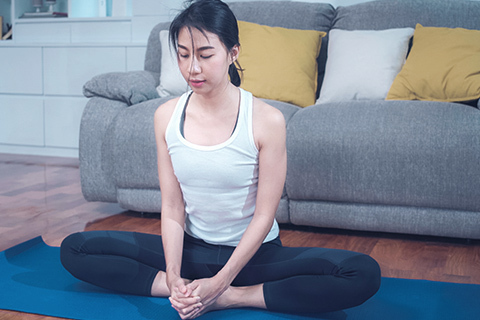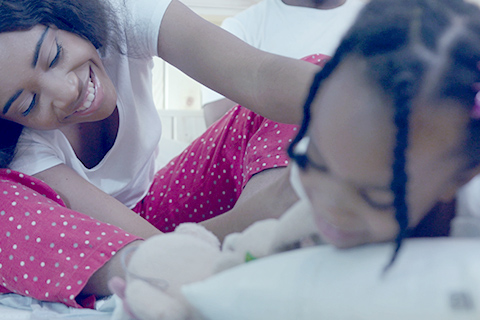Not so easy
![]() Has anybody ever instructed you to “just do this” or “just do that” — making the “this” or “that” sound so easy? Just eat your vegetables … Just exercise after school … Just get up and move … Just go to bed on time … Just stay calm … and the list goes on.
Has anybody ever instructed you to “just do this” or “just do that” — making the “this” or “that” sound so easy? Just eat your vegetables … Just exercise after school … Just get up and move … Just go to bed on time … Just stay calm … and the list goes on.
If you’ve heard instructions such as these, you’re not alone. Often well-intentioned family and friends want to provide support but aren’t sure how to do so.
The Boston Children’s fit kit Problem Solvers can help you talk about common problems and ideas to overcome these problems. The goal is to develop a process for overcoming problems when they arise.
Part of the adventure
Everybody runs into problems sometimes. Don’t get discouraged. Figuring out how to solve problems when they come up is part of the adventure of a healthy lifestyle.
Following the advice in the Boston Children’s fit kit takes effort. Maybe you’re having trouble getting started. Or maybe you had a so-called “slip” or “setback.”
A “slip” is like a train that goes slightly off track while heading in the right direction. You are able to get back on track quickly after a slip. A “setback” is like a train that derails and goes in the wrong direction for a while. You have a bigger challenge to get back on track after a setback.
Slips don’t take as much work to get back on track as setbacks. So if you feel like you’ve had a slip, give your best effort to get back on track before it turns into a setback.
How to use the fit kit Problem Solvers
The fit kit My Problem Solvers are designed to help you follow the main messages — whether you’re just getting started or had a slip or setback. Each one focuses on a real-life problem and then helps you to think through possible solutions using three steps:
- Ask yourself: Questions to help you clearly state the problem in your own words. Sometimes it helps to write down your responses. There are no right or wrong answers.
- Learn more: Find out what problem-solving ideas have worked for other kids. Each person is unique. But it can help to know that many kids have similar problems and how they solved them.
- Ask yourself: Questions to help you make a plan to solve your problem. Maybe you like one or more of the ideas that have worked for other kids. Or maybe you can use the ideas as a springboard to come up with other ways that are just right for you.
Make an action plan
![]() Use the fit kit My Problem Solver action plan to plan how you can put your ideas into action. Break your plan into small steps, and decide when you will take each step. If one idea doesn’t work, try another.
Use the fit kit My Problem Solver action plan to plan how you can put your ideas into action. Break your plan into small steps, and decide when you will take each step. If one idea doesn’t work, try another.
Some kids like to use the fit kit trackers to help them monitor success with their action plans. The trackers can also help you get back on track after a slip and avoid setbacks.
Check out this Sample My Problem Solver action plan to get some ideas.
Ask for help
Support from other people can be very helpful when solving problems. Find a person who wants to understand your problems and work with you. Many families and friends enjoy doing the fit kit Problem Solvers together. Kids often ask a parent, healthcare provider, teacher, or coach for help.
![]() You may run into problems that don’t have fit kit Problem Solvers. You can still use the worksheet. Review the available fit kit Problem Solvers as a guide for how the process works. Then ask your own questions for step #1 and brainstorm creative ideas for step #2. The questions for step #3 don’t change.
You may run into problems that don’t have fit kit Problem Solvers. You can still use the worksheet. Review the available fit kit Problem Solvers as a guide for how the process works. Then ask your own questions for step #1 and brainstorm creative ideas for step #2. The questions for step #3 don’t change.
As you work together, celebrate success and learn from slips and setbacks. Remember to show appreciation and provide encouragement to each other.
Check out the Boston Children’s fit kit Problem Solvers
Review the problems below. Then choose one or more that sound like something you’ve gone through to see how the fit kit Problem Solver can help you stay on track.










